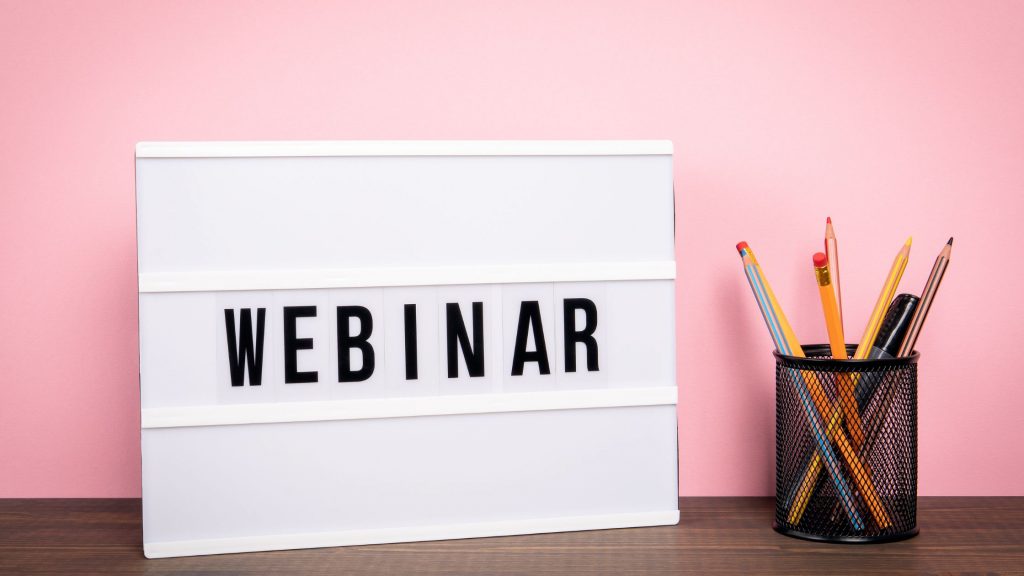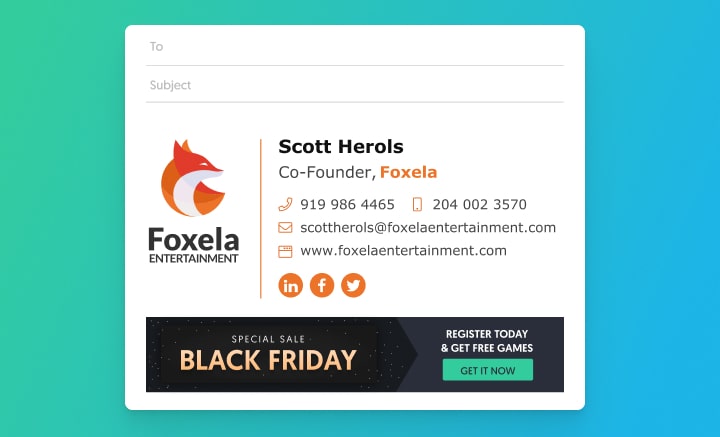Picture this: You’ve written an ice-cold email that would make a polar bear shiver with envy.
Your subject line is hotter than a jalapeño, and the body of the email is smoother than a baby’s bottom.
But still, the echoing silence from your inbox is deafening.
Not a single reply.
Not even a polite rejection.
It’s like shouting into an abyss, your voice lost in the void.
You find yourself questioning, pondering over the why’s and how’s. Was the email not compelling enough? Or did it disappear into the dreaded spam folder?
The truth is, the email could have been perfect, but if the closing line was off, you might never get that response.
That’s right.
The last few lines of your cold email are more crucial than you might think.
They’re the final impression, the clincher, the cherry on top.
A lackluster closing line can be the difference between a sale and a hard pass. It’s like serving a gourmet meal without the finishing garnish.
Sure, it tastes great, but it’s missing that je ne sais quoi that takes it to a whole new level.
In this article, we’re going to turn the tables.
We’ll decode the art of crafting an impactful closing line for your cold emails, the kind that leaves a lasting impression and compels the reader to act.
No more shouting into the abyss.
Instead, prepare to hear the sweet symphony of responses pouring in.
So, buckle up as we dive headfirst into the world of top-tier closing strategies that are bound to get you results.
What Should You Incorporate in a Cold Email Campaign?

Before we reveal the secret sauce on how to end a cold email with a bang, let’s quickly touch upon the essential elements you must include in your cold email.
After all, a strong closing is only as good as the email it’s attached to.
A high-converting cold email typically consists of the following elements:
– A captivating subject line that intrigues recipients and prompts them to open the email.
– Personalized content that addresses the recipient by their name and demonstrates familiarity with their company or industry.
– A clear objective, whether it’s generating leads, scheduling meetings, or fostering partnerships
– Established credibility through mentioning your expertise, accomplishments, or client success stories.
– Value-driven insights that resonate with the recipient’s pain points or aspirations.
– A concise and well-structured body, which allows the reader to quickly grasp your message and intent.
– A compelling call-to-action (CTA) that directs the reader toward the desired outcome.
– An impactful closing line that leaves a lasting impression and persuades the recipient to act.
By integrating these vital components into your cold email, you set the stage for an impactful closing line that, when combined with the other elements, results in a high-converting, response-generating message.
For more tips on crafting the perfect cold email, check out our comprehensive guide here.
Now, let’s dive into the heart of the matter – those all-important closing lines.
17 Proven Closing Lines To Get Results
Your cold email is well-crafted, personalized, and value-driven, but it’s the closing line that will make or break your chances of getting a response.
An exceptional closing line should leave a lasting impression, create a sense of urgency, or spark curiosity, ultimately driving the recipient to act on your call to action.
Here are 17 proven closing lines that have generated results for countless professionals in the world of cold emailing.
Experiment with these and discover which ones resonate with your audience, ensuring you’re closing every cold email with a powerful, persuasive finale.
Interested?
Let’s start with a classic.
Short, sweet, and straight to the point, “Interested?” is a great way to wrap up your cold email.
This closing line is an open invitation for the recipient to respond, suggesting that the ball is now in their court.
It’s like sliding a note across the table with an enticing proposal and raising an eyebrow, waiting for a reaction.
Remember, the best cold emails aren’t monologues, they’re conversation starters.
And what better way to start a conversation than by asking if they’re interested?
But be warned, like a double-edged sword, its simplicity is also its downfall.
Use it wisely, or you might just seem too eager.
What do you say?
Sometimes, a cold email needs a pinch of old-school charm.
“What do you say?” is a friendly and informal way to end your email, almost like a friendly nudge.
It’s like extending a handshake across cyberspace, waiting for the recipient to reciprocate.
This closing line works best when you’ve built up a compelling case in your email body, and you’re now inviting the recipient to give their verdict.
It’s casual, it’s inviting, and it’s just a tad bit mysterious like a classic noir detective tipping his hat and asking, “So, are we on the same page here?”
Feel free to reach out if you have any questions
Like a trusty Swiss army knife, “Feel free to reach out if you have any questions” is versatile and effective.
It’s an open door, an invitation for the recipient to engage with you further.
This closing line works like a charm because it reassures the recipient that you’re there to provide additional information and help.
It’s the equivalent of a friendly shopkeeper saying, “If you need anything, just holler!”
But remember, like a Swiss army knife, it’s only as useful as the person wielding it.
If your email doesn’t provide enough value or context upfront, you might just end up looking like a lost tourist holding a map upside down.
Do you have 15 minutes for a coffee chat? Let me know when we can meet
Now, let’s shift gears and take a detour down the casual lane with, “Do you have 15 minutes for a coffee chat? Let me know when we can meet”.

This closing line is like a warm, friendly smile across the room.
It’s an invitation to get to know each other better, over a metaphorical coffee.
By suggesting a 15-minute chat, you’re being considerate of their time, and it also subtly indicates that this won’t be a long, drawn-out sales pitch.
It’s a chance for the recipient to put a personality to the email, to feel the human behind the screen.
But remember, timing is key.
This closing line is like asking someone for a dance — it can be charmingly persuasive if the music’s right, or embarrassingly awkward if the timing’s off.
So, make sure your email sets the right tune before you ask them to dance.
Is improving [business goal] currently at the top of your priority list?
Ah, the personalized touch.
“Is improving [business goal] currently at the top of your priority list?” is a closing line that shows you’ve done your homework.
By mentioning a specific business goal, you demonstrate an understanding of their challenges and aspirations.
It’s like a savvy detective piecing together the clues, zeroing in on the motive.
This closing line invites the recipient to share their perspective, fostering a connection based on shared interests.
But be cautious.
It’s essential to ensure your intel is accurate, or you might come across as a bumbling inspector who’s misread the situation entirely.
We hope to secure a spot in your busy schedule.
Sometimes, flattery is the way to go.
“We hope to secure a spot in your busy schedule” acknowledges that the recipient is a busy professional, and you’re seeking a slice of their valuable time.
This closing line works like a velvet glove, a gentle and respectful approach that appeals to the recipient’s ego.
It’s the equivalent of a waiter at a fine dining restaurant, politely inquiring if they may clear the table.
But be warned, this line can appear insincere if overused, like a waiter who’s constantly asking if everything is okay.
Use it with discretion, and it can be a powerful tool in your cold email arsenal.
I hope you have a great weekend!
Sometimes, it’s the little things that make all the difference.
“I hope you have a great weekend!” is a friendly and casual closing line that adds a touch of warmth to your email.

It’s like a cheerful neighbor waving goodbye as they head off to work.
This closing line humanizes your email and sets a positive tone, making it more likely that the recipient will remember your message fondly.
However, use this line judiciously, like a dash of cinnamon in your favorite dessert.
Too much, and it can come across as insincere, like a neighbor who’s always a little too enthusiastic about the weather.
Worth a chat?
The art of the rhetorical question strikes again. “Worth a chat?” is a low-pressure closing line that leaves the decision in the recipient’s hands.
It’s like a suave magician, revealing a card and asking, “Is this the one?”
This closing line works particularly well when you’ve presented a compelling case in your email, as it prompts the recipient to evaluate whether your proposition merits further discussion.
But remember, a magician’s trick is only as good as their presentation.
So, make sure your email builds suspense and intrigue before you reveal this closing line, or you might end up with a rabbit out of the hat when you were hoping for something more spectacular.
Is there a particular feature or aspect of our product you’d like more details on?
Consider this closing line a gateway to a more focused conversation.
“Is there a particular feature or aspect of our product you’d like more details on?” is like a gracious host asking which appetizer you’d like to start with.
By allowing the recipient to choose their area of interest, you create a tailored experience that caters to their specific needs.
This closing line encourages dialogue and gives the recipient a sense of control, which can work wonders in fostering trust and engagement.
However, make sure your email has provided a tantalizing overview of your product first, or this closing line may fall flat like an uninspired menu.
Ready to dive into pricing details or prefer a chat with your legal team first?
“Ready to dive into pricing details or prefer a chat with your legal team first?” is a closing line that offers the recipient options, allowing them to choose their preferred path.
It’s like a game show host presenting a contestant with two doors, each with a different prize.
By providing a choice, you show respect for their decision-making process and empower them to take the next step on their terms.
This closing line works well when you’ve built a strong case for your product or service and are ready to move into the negotiation phase.
Just remember, timing is everything; spring this line too early, and you might scare off a potential client before they’ve had a chance to be dazzled by your offering.
Are you curious about how your peers in the industry have overcome [a problem that your product or service solves]?
Tap into the power of curiosity with this closing line.
This question piques the recipient’s interest, like a riveting cliffhanger at the end of a TV show episode.
By referencing their industry peers, you create a sense of relevance and urgency, tempting the reader to learn more.
But remember, timing is everything.
Use this closing line when your email has already laid the groundwork, establishing the problem and presenting your solution as the key to overcoming it.
We’ve just released a case study on [relevant topic]. Would you like me to send it your way?
This email closing line positions you as a helpful resource, offering valuable insights without any strings attached.
It’s like a friendly librarian, recommending a book they think you’ll enjoy.
By presenting a case study on a relevant topic, you showcase your expertise and success, making it more likely that the recipient will be intrigued by your offering.
But don’t forget, the element of surprise is crucial.
Reveal this closing line like a plot twist that nobody saw coming, and watch as the recipient’s curiosity gets the better of them.
How are you currently addressing the challenge of [a problem that your product or service solves]? If you have a moment, I’d love to hear your approach.
This closing line is like a friendly neighbor asking for gardening tips.
“How are you currently addressing the challenge of [a problem that your product or service solves]? If you have a moment, I’d love to hear your approach.” invites the recipient to share their perspective and opens the door for a genuine exchange of ideas.
By expressing genuine interest in their approach, you create a rapport that lays the groundwork for a collaborative relationship.
Ensure your email highlights the challenges your product or service can address, so this closing line lands like an open invitation, not a nosy inquiry.
If you enjoy blog posts like these, please let us know, and we’ll gladly send you more.
Offering value without expecting anything in return is a powerful way to establish trust and credibility.
And this closing line embodies this philosophy.
It’s like a baker offering a free sample of their latest creation, simply because they want to share their passion.
This closing line works best when your email includes insightful content that demonstrates your expertise and industry knowledge.
Make sure the recipient feels they’ve gained something valuable from your email, and they’ll be more likely to welcome further communication.
I’d be happy to offer you a personalized walkthrough of our platform. Would you like to schedule a session at your convenience?
Sometimes, the best way to convince someone of your product’s value is to let them experience it firsthand.
“I’d be happy to offer you a personalized walkthrough of our platform. Would you like to schedule a session at your convenience?” is a closing line that offers a personal touch, like a tour guide leading an exclusive expedition.
By extending an invitation to a one-on-one session, you show that you’re invested in their success and eager to provide tailored support.
To maximize the effectiveness of this closing line, ensure your email conveys the unique benefits of your platform and whets the recipient’s appetite for a more in-depth exploration.
We’re hosting an informative webinar on [topic] that might interest you. Can I reserve a seat for you?

Education is a powerful tool and this closing line leverages that power.
By inviting the recipient to a webinar, you offer them the opportunity to gain valuable insights and engage with your brand in a low-pressure setting.
This line is akin to extending an invitation to an exclusive lecture, giving the recipient the feeling that they’re privy to insider knowledge.
Ensure your email clearly communicates the value and relevance of the webinar to the recipient’s needs to make this closing line truly irresistible.
Have you considered the advantages of adopting a new approach to [specific aspect of their business]? I’d be happy to share more insights.
Change can be daunting, but “Have you considered the advantages of adopting a new approach to [specific aspect of their business]? I’d be happy to share more insights.” is a closing line that gently nudges the recipient to contemplate fresh possibilities.
Like a wise mentor offering sage advice, this closing line presents an opportunity for growth and encourages the recipient to explore new avenues.
To make this closing line truly effective, your email should touch on the recipient’s current pain points and hint at the benefits your product or service can bring.
That way, this closing line will spark curiosity and open the door for further discussion.
Sign-Off Strategies That Work
If closing a cold email was an art, the sign-off would be the defining brushstroke that pulls the entire masterpiece together. It’s not a mere afterthought, but rather a strategic element that can play a pivotal role in generating a response.
While the body of your email may successfully pique the recipient’s interest, an effective sign-off can add an extra punch that pushes them to act. You want to leave a lasting impression, kindling a sense of anticipation for future communications.
Just as the right ingredients can make a dish unforgettable, employing the right sign-off strategies can make your cold email hard to ignore. These techniques can be as subtle as a tailored email signature or as direct as a well-crafted call-to-action.
But remember, it’s not about pulling a rabbit out of a hat, but understanding your audience and delivering a sign-off that resonates with them. This is the key to unlocking the door to meaningful conversations and fruitful business relationships.
So buckle up as we dive into the proven sign-off strategies that really work!
Create Company Email Signature

Source: WiseStamp
A professionally designed company email signature is like a firm handshake at the end of a conversation.
It leaves a lasting impression on the recipient and ties up your email neatly while providing all the necessary contact information and, if desired, a hint of your brand’s personality.
An effective company email signature includes essential elements such as your name, title, company name, contact details, social media links, and possibly a logo or company tagline.
This information helps the recipient quickly understand who you are and how to get in touch.
But a truly outstanding signature goes beyond the basics.
By adding a touch of creativity and personalization, you can transform your signature from a mere formality into a powerful marketing tool.
Consider incorporating a short, captivating call-to-action (CTA) or showcasing your latest achievement, award, or press mention.
This can help spark the recipient’s curiosity and set the stage for future interactions.
A well-structured email signature also adds credibility and professionalism to your cold email.
It demonstrates that you represent a legitimate organization and take your communication seriously.
Plus, it serves as a digital business card, allowing the recipient to save your contact information effortlessly.
When crafting your company email signature, make sure it’s visually appealing, easy to read, and consistent with your brand’s identity.
Use a clean layout, minimalistic design, and simple fonts to avoid cluttering the signature.
Ultimately, your email signature should be an extension of your brand and reinforce the message you’re trying to convey in your cold email.
Pose a Question as your Closing Line
A well-posed question can be a powerful ally in the battle for your recipient’s attention.
When you end your cold email with a thought-provoking question, you invite the reader to engage with your message and consider the benefits of your proposition.
In a world where cold emails often feel like one-way streets, posing a question is like extending an olive branch. It demonstrates that you value the recipient’s input and care about their perspective.
This subtle gesture can break down barriers and make the reader more open to exploring the possibilities.
To craft an effective question-based closing line, focus on a topic relevant to the recipient’s interests, challenges, or goals.
For example, if your product or service addresses a specific pain point, ask how they’re currently managing that issue. Or, if your offering provides a unique advantage, inquire if they’ve considered the benefits of adopting a new approach.
It’s crucial to keep your questions open-ended, non-invasive, and easy to answer.
This ensures the recipient doesn’t feel pressured or overwhelmed, which could lead to a defensive response or no response at all.
The goal is to pique their curiosity and create an opportunity for meaningful dialogue.
Finish With a Strong CTA
A strong call-to-action (CTA) is the engine that drives your cold email’s success.
It’s the clear and concise directive that guides your reader toward the desired outcome, whether that’s scheduling a meeting, downloading a resource, or signing up for a webinar.
To create an effective CTA, focus on using action-oriented language that clearly communicates what you want the recipient to do and why it’s beneficial for them.
Make sure your CTA is easy to find and visually stands out from the rest of the email.
This can be achieved through bold formatting, a different font color, or even a button or hyperlink.
When crafting your CTA, keep it simple and direct.
Avoid using jargon or overly technical terms that may confuse or alienate the reader.
Instead, opt for phrases like “Schedule a call,” “Download our whitepaper,” or “Learn more” that convey the action and value proposition in a straightforward manner.
By ending your cold email with a compelling CTA, you create a sense of urgency and make it easier for the reader to take the next step.
This can greatly improve your chances of securing a positive response and moving the conversation forward.
Use P.S. Section Wisely
The P.S. (postscript) section, though often overlooked, can be a secret weapon in your cold email arsenal.
By adding a thoughtful P.S. to your email, you can create a sense of exclusivity, share additional value, or reiterate a key point that might have been lost in the body of your message.
To use the P.S. section effectively, keep it concise and relevant.
Consider highlighting a limited-time offer, sharing a recent success story, or mentioning an upcoming event that aligns with the recipient’s interests.
The P.S. can also be used to create a sense of urgency by emphasizing a deadline or highlighting the scarcity of a product or service.
Remember, the P.S. should be an enhancement, not a crutch.
It should complement the main content of your email and provide additional value, not serve as a last-ditch effort to win the reader’s attention.
By using the P.S. section wisely, you can reinforce your message and create a lasting impression that may lead to a positive outcome.
‘’Thank you!’’ Goes a Long Way
Never underestimate the power of gratitude.
A simple “Thank you!” at the end of your cold email can make a world of difference in how your message is received.
It demonstrates that you appreciate the recipient’s time and attention, which can help foster a positive attitude toward your communication.
Incorporating gratitude in your closing line not only leaves a good impression but also helps humanize your message and make it more relatable.
It’s a small gesture that can carry a lot of weight in building rapport and establishing trust.
When expressing your gratitude, be genuine and specific.
Instead of a generic “Thank you for your time,” consider something like “Thank you for considering our proposal” or “I appreciate your attention to this matter.”
By personalizing your expression of gratitude, you show the recipient that you’ve put thought into your message and truly value their time.
In conclusion, ending your cold email with a heartfelt “Thank you!” can help create a positive, lasting impression that sets the stage for a productive relationship and increases the likelihood of receiving a response.
3 Easily Avoided Common Mistakes
To maximize the effectiveness of your cold email campaign and position yourself among the top 1% of performers, it’s crucial to avoid common mistakes that could hinder your success.
By steering clear of these pitfalls, you’ll increase your chances of securing positive responses and achieving your desired outcomes.
Here are three easily avoidable mistakes that can make all the difference:
Lack of personalization
A cold email that lacks personalization is likely to be perceived as spam or, at best, a mass email with little relevance to the recipient.
To avoid this mistake, take the time to research your prospects and tailor your message to their specific needs, interests, or pain points.
Address them by their name, mention their company or a recent accomplishment, and demonstrate that you’ve put effort into understanding their unique situation.
By personalizing your cold email, you’ll increase the chances of grabbing the recipient’s attention, fostering a genuine connection and getting that sale.
Too Much Information
While it’s important to provide value and demonstrate your expertise in a cold email, overloading the recipient with too much information can be counterproductive.
Lengthy, dense paragraphs and an excessive amount of details can make your email difficult to read and may cause the recipient to lose interest.
To avoid this mistake, keep your email concise and focused on a clear objective.
Use bullet points, bold formatting, and white space to break up text and make it easier to digest.
Prioritize the most important information and eliminate anything that isn’t directly relevant to your main message.
Not following up
One of the biggest mistakes you can make in a cold email campaign is not following up with your prospects.
Many people receive a high volume of emails each day, and it’s easy for your message to get lost in the shuffle.
By sending a thoughtful follow-up email, you increase the chances of getting your prospect’s attention and demonstrate your commitment to establishing a relationship.
When following up, avoid being overly aggressive or pushy.
Instead, offer additional value, share new insights, or simply express your continued interest in connecting.
A well-crafted follow-up email can be the key to turning a cold lead into a warm conversation.
Conclusion
As we bring our journey to an end, it’s important to remember that mastering the art of closing a cold email is not only about adding a powerful final line – it’s about crafting an entire experience that leaves the recipient eager to respond.
From the captivating subject line to the personalized content, each element plays a role in creating a memorable impression that resonates with the reader.
Think of your cold email as a symphony, with each component working harmoniously to create a piece that is both engaging and persuasive.
The closing line is the crescendo, the dramatic finale that leaves the audience captivated and yearning for more.
It’s the exclamation point that punctuates your message, urging the reader to take action and continue the conversation.
So, the next time you sit down to craft a cold email, remember to give your closing line the attention it deserves.
After all, it’s the final piece of the puzzle that can make or break your chances of success.
With the right combination of strategy, creativity, and a touch of finesse, you can transform your cold email campaigns into a powerful tool that generates results and takes your business to new heights.
And with that, we bid you adieu.
May your inbox overflow with responses, and may your closing lines forever echo in the minds of your recipients, urging them to act and opening the doors to a world of opportunities.
What is ZeroIn?
ZeroIn is a cutting-edge email discovery platform designed to streamline and simplify your prospecting endeavors.
This comprehensive tool includes an easy-to-use CRM that lets you organize and manage vital prospect data, taking your prospecting to the next level.
ZeroIn’s capabilities extend beyond just providing contact information like business emails and phone numbers, offering over 20 additional insights about your prospects and their organizations.
Seamlessly integrated with LinkedIn Free or Sales Navigator searches, ZeroIn’s browser extension utilizes your search criteria and taps into its vast database to present an all-encompassing view of your potential clients.
With up to 26 unique data points, including verified business emails, and a rigorous 10-step verification process, ZeroIn guarantees accuracy and authenticity for every email address you encounter.
The platform’s flexibility allows for easy import, re-verification, and export of leads in various formats, making it an indispensable tool for your outreach campaigns.
How can ZeroIn help your business?
ZeroIn is here to turbocharge your business’s outreach and sales efforts by simplifying the prospect list-building process. Its intuitive interface enables you to find and verify prospect email addresses with just a single click, both individually and in bulk.
ZeroIn’s duplicate finder feature ensures your CRM data remains accurate and up-to-date, saving you time and resources.Ideal for small and medium-sized businesses seeking affordable and efficient email discovery and management solutions, ZeroIn offers a lifetime, one-time payment deal.
With ZeroIn as your trusted ally, you can boost your prospecting capabilities, connect with the right people, and ultimately propel your business growth to new heights.
Create a Free Account and Get 25 credits!
FAQ
What Should You Incorporate in a Cold Email Campaign?
A high-converting cold email campaign should include the following elements:
- A captivating subject line that intrigues recipients and prompts them to open the email.
- Personalized content that addresses the recipient by their name, demonstrates
familiarity with their company or industry and caters to their specific needs and interests. - A clear objective, whether it’s generating leads, scheduling meetings, or fostering partnerships.
- Established credibility through mentioning your expertise, accomplishments, or client success stories.
- Value-driven insights that resonate with the recipient’s pain points or aspirations.
- A concise and well-structured body, which allows the reader to quickly grasp your message and intent.
- A compelling call-to-action (CTA) that directs the reader toward the desired outcome.
- An impactful closing line that leaves a lasting impression and persuades the recipient to act.
Which Sign-Off Strategies Work?
Effective sign-off strategies include:
- Creating a professional company email signature that includes your name, title, company, contact information, and possibly your company logo or social media links.
- Posing a question as your closing line to engage the recipient and encourage a response.
- Finishing with a strong call-to-action that clearly communicates the next step you want the recipient to take.
- Using the P.S. section wisely by adding a valuable nugget of information, a personal anecdote, or a reminder of your offer.
- Expressing gratitude with a simple “Thank you!” to show appreciation for the recipient’s time and consideration.
Easily Avoided Common Mistakes
To ensure your cold email campaign stands out, avoid these common mistakes:
– Lack of personalization: Sending generic emails without addressing the recipient by name, demonstrating familiarity with their company or industry, or catering to their specific needs and interests can result in low engagement and response rates.
– Too much information: Overwhelming the recipient with excessive details can make your message difficult to digest. Keep your email concise, focusing on the most important points and the desired outcome.
– Not following up: Persistence is key in cold email campaigns. If you don’t receive a response, don’t be afraid to follow up with a gentle reminder or additional information that might pique the recipient’s interest.
